1. Best Uses
1.1. Time and Scale
1.2. Big Ideas
1.3. Experience
1.4. Practice
1.5. Learning by Doing
1.6. Transferability
1.7. Empowerment
1.8. Mistakes
1.9. Connections
1.10. Literacy
2. Best Practices
2.1. Subtle Rules
2.2. Debriefing
2.3. Creativity
2.4. Unique Problem Solving
2.5. Flexibility
2.6. Fun
2.7. Genre
2.8. Perspective
2.9. Transferability
2.10. Open-Ended
2.11. Stories
2.12. Debates
2.13. Universal Truths
2.14. Cost-Effective
3. Processes
3.1. Technologies Six- Steps
3.1.1. Theory
3.1.2. Innovators
3.1.3. Magic Bullets
3.1.4. Confusion
3.1.5. Strategic Advantage
3.1.6. Infrastructure
4. Genres
4.1. Branching Stories
4.1.1. Multiple Choice/Sequence of Events
4.1.2. Coaching
4.2. Interactive Spreadsheets
4.2.1. Business Focus
4.2.2. Visual/Graphics
4.2.3. Trigger-Based Feedback
4.3. Game-Based Models
4.3.1. Entertainment Games
4.3.1.1. Task-Based Content
4.4. Virtual Labs/Virtual Products
4.4.1. Objects
4.4.2. Situations
5. Perspectives
5.1. Stand-Alone
5.1.1. Static Experience
5.2. Instructor-Supported
5.2.1. Transformational Experience
5.3. Linear Skills
5.3.1. Formal Learning
5.4. Dynamic Skills
5.4.1. Informal Learning
6. Content
6.1. Linear
6.1.1. Path
6.2. Dynamic
6.2.1. Cyclical
6.2.1.1. Tiny Activities
6.2.2. Systems
6.2.2.1. Relationships
7. Elements
7.1. Simulation
7.1.1. Interactions
7.1.2. Experimentation
7.1.3. Role Play
7.1.3.1. Live
7.1.3.1.1. Simple
7.1.3.1.2. Extended
7.1.3.1.3. Input
7.1.3.2. Technology
7.1.3.2.1. Virtual Classrooms
7.1.3.2.2. Multi-Player
7.1.3.2.3. Virtual Space
7.1.4. Practice
7.1.5. Discovery
7.1.6. Situations
7.1.7. Objects
7.1.8. Content
7.2. Games
7.2.1. Good Will
7.2.2. Experience
7.2.3. Linear Content
7.2.4. Predicatability
7.2.5. Enjoyment
7.2.6. Interactions
7.3. Pedagogical
7.3.1. Learning Objectives
7.3.2. Design Decisions
7.3.3. Productivity
